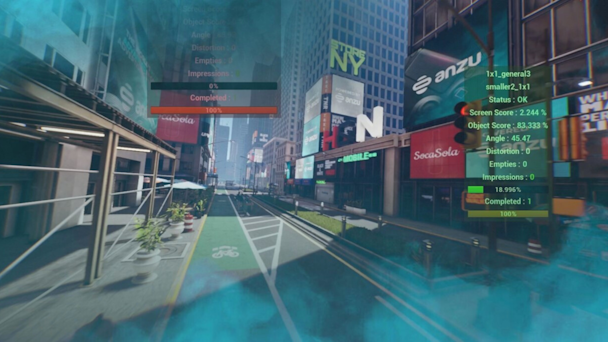Is this the most important patent ever for gaming and metaverse advertising?
In-game advertising startup Anzu has secured a pivotal patent for tech that can measure ad viewability in 3D worlds.

Is this the most important patent ever for gaming and metaverse advertising?
Anzu – which counts among its backers WPP, Sony Innovation Fund, NBCUniversal, HTC and Bitkraft – has been on a mission since 2017 to make advertising in games better. Recently, it has been making waves as studios cross a once-dreaded line to create ads in 3D games. As the only licensed in-game ad provider for Xbox, it has made headway on a product that will ease marketer concerns about the viability of in-game advertising.
In March 2022, Anzu partnered with Oracle Moat in a ‘first-to-market’ deal to develop tech that will reveal whether gaming creative has been actually viewed by players. Less than a year later – and after five years of product development – it has secured a patent from the United States Patent and Trademark Office for ‘An Object Viewability Determination System and Method’.
Advertisement
With game studios now embedding ad inventory in their titles (similar to outdoor billboards), they – like their real-life counterparts – will have to prove its effectiveness. This is a strategy being considered by everone from the leanest of mobile studios to the console giants PlayStation and Xbox.
The patent is for a system that can measure the percentage of the creative on-screen in a 3D world, accounting for the size of the ad, how long it is in view and the angle it is viewed at. If said creative is a video, the duration of the view also comes under scrutiny. In short, viewability requires much more work to prove in 3D than it ever did in 2D.
The system collects viewable impressions and viewability. It also adheres to MRC standards of what actually constitutes a view, the slightest glimpses at an obtuse angle in a speeding car won't make the cut. And then there is data about the lifecycle of each individual piece of inventory, like their average screen coverage, occlusions, virtual world position and orientation in relation to user view. In short, it will make it easy to find the most lucrative spots across a slew of titles. With this feedback, less effective inventory can also be optimized.
Advertisement
Anzu’s co-founder and CEO, Itamar Benedy, explains: “Five years ago, when we were first building our patented 3D ad tracking technology, gaming was not seen as a serious ad channel. We knew back then, though, that for advertisers to treat gaming seriously, they would need everything they are used to from other channels.”
This meant creating a process that provides the KPIs the trade is used to. Meanwhile, the patent brings more than protected status to the idea, he says. “It shows our innovation and proves our position as the in-game advertising leader in the market.”
On whether this seemingly intensive tech could cause in-game lag or performance issues (which gamers will not tolerate), Benedy says it is built into the tech and is “highly optimized”. “It is lightweight in size and performance, with low impact on final build size, RAM and CPU, meaning it does not impact the game’s performance in any way.”
Suggested newsletters for you
As a final pitch to advertisers, Benedy makes a compelling claim about gaming: “As gaming is a 3D environment, the viewability is better than other traditional digital mediums and, due to the nature of gaming, players are fully engaged with the medium, offering amazing attention rates as there is no second screening.” The same cannot be said of TV.
Marketers can now, in real-time, understand their impact in these highly engaged spaces – but it has been a long time coming. “It has taken some time to shift the advertiser mindset and ensure they treat gaming with the same gravitas as traditional ad channels. This happens with any new channel and we have worked to ensure that all the necessary tools are in place so that once advertisers are ready to go in-game, they have the knowledge, confidence and ability to tap into gaming at scale.”
Benedy’s comments come as talk of recession fills the air. As price rises hit gamers’ pockets by increasing the cost of development, it stands that advertising will become more broadly accepted by all parties. It’s a shift occurring elsewhere in entertainment, with Disney+ and Netflix introducing ad-funded models. As ever, game studios will have to toe the line by monetizing their worlds without breaking that all-important immersion.

